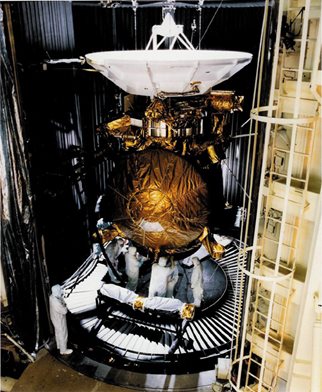Playing is Learning
The Cassini Huygens Probe
January 4th, 2015
| Ads | ||
|
Play the Challenge
|
||
|
A New Word is Coined A new Character is revealed A new Game is Afoot |
An Edutainment Adventure Based on Three Rounds of Investigations
|
|
|
Welcome to the World of PROFESsee™by seeCOSM™ PROFESsee™ is my title. I am the perpetual learner, in pursuit of knowledge, wisdom and truth. I derived my name from professor |
 |
|
|
Never mind that Philippines have been hit by super Yolanda and needs all the aid, but there has always been a mission to study the rings around Saturn! As if they will one day vacate and come around earth. But that is neither here nor there and if it will help in unraveling this great mystery that is our universe, then it is very welcome. Launched on 15th October 1997 and antecedently called Saturn Orbiter Titan Probe (SOTP), the Cassini Huygens spacecraft was set up to go on a commission to Saturn with the aim of studying the planet, its rings, magnetosphere, satellites and its moon-Titan. The spacecraft comprises two parts: the Cassini, with 12 instruments is the Saturn orbiter whereas Huygens carries 18 instruments and is the Titan Lander. Named after astronomers Giovanni Cassini and Christian Huygens, Cassini has camped on Saturn for 9 years 4 months and counting, since its entry into orbit surrounding the planet on July 1st 2004. However, Huygens only entered and landed on Titan on January 14th 2005 after separating from the orbiter on December 25th 2004. A combined effort of the United States’ NASA, Europe’s ESA and Italy’s ASI, this Cassini Huygens mission is managed by NASA’s Jet Propulsion Laboratory in the United States, where Cassini was assembled. The European Space Research and Technology Centre was responsible for developing Huygens. The commission has been the 4th space probe to Saturn but what makes it a phenomenal mission as opposed to the previous ones is the fact that this is the first to enter Saturn’s orbit thus providing an in-depth study of the planet. When NASA declared extended funding for the ground operations of this mission on April 2008, it was renamed to Cassini Equinox Mission. Another extension in February 2010 again altered the name to Cassini Solstice Mission. Currently, the Cassini Huygens NASA Mission is purported to end in the year 2017. Can you Answer the questions? Image courtesy of: http://lasp.colorado.edu/cassini/mission_desc/ |
||
Latest News / Events
E-mail [email protected]
The Professee™ Newsletter Beta
http://www.seecosm.com/
http://www.seecosm.com/

